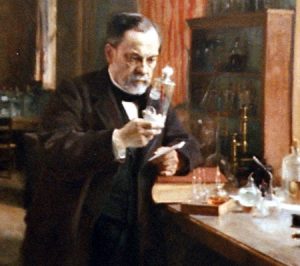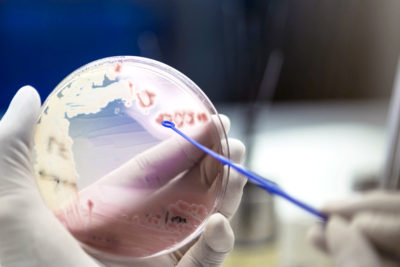 A new study challenges the time-honored validity of microbe resistance as an example of biological evolution. An international research team, led by Christina Warinner of Harvard University, investigated ancient microbes extracted from fossilized human teeth. The research team included thirty-two investigators from twelve institutions in seven countries.
A new study challenges the time-honored validity of microbe resistance as an example of biological evolution. An international research team, led by Christina Warinner of Harvard University, investigated ancient microbes extracted from fossilized human teeth. The research team included thirty-two investigators from twelve institutions in seven countries.
By comparing the microbes on fossilized human teeth, the research team found ancient microbe resistance using the exact molecular mechanisms of microbial resistance, as seen in today’s microbes.
Evolution Model
Microbes, or microorganisms, include bacteria, protozoa, fungi, algae, amoebas, viruses, and molds. Today’s concept of antimicrobial resistance did not surface for more than 100 years after Charles Darwin published 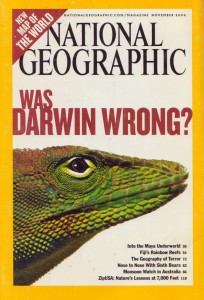 the Origin of Species.
the Origin of Species.
Since the late 20th century, however, microbial resistance emerged as a popular model of evolution. The National Geographic story entitled “Was Darwin Wrong” [2004] (pictured right), by science writer David Quammen presented antimicrobial resistance as proof that Darwin was not wrong –
“There’s no better or more immediate evidence supporting the Darwinian theory than this process of forced transformation [i.e., microbial-resistance] among our inimical germs.”
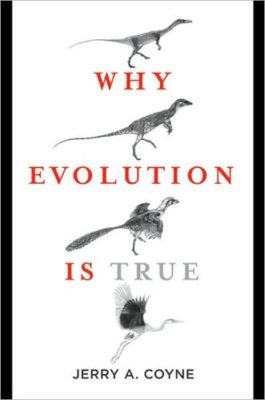 Jerry Coyne, an evolution biologist at the University of Chicago, in his book “Why Evolution is True” [2009] (pictured left) argued –
Jerry Coyne, an evolution biologist at the University of Chicago, in his book “Why Evolution is True” [2009] (pictured left) argued –
”Species can undergo a lot of evolution in a short time accounting for the rapid rise of drug resistance in disease-causing bacteria and viruses [microbes].”
Richard Dawkins in his book “The Greatest Show on Earth, The Evidence for Evolution” [2009] said –
“Many bacterial strains have evolved resistance to antibiotics in a particularly short period.”
Over the past decade, the genomic revolution has given scientists the technical tools to examine the genetic evidence for evolution for the first time.
Since molecules are unstable without adequate protection, their storage conditions over long periods must be of exceptional quality. Fortunately, the dental calculus on fossilized human teeth is known as one of nature’s best preservation methods.
Preservation
For the study, Warriner’s research team compared the dental calculus of four well-preserved adult skeletons from the medieval St. Petri church and convent complex in Dalheim, Germany, dated to about 1,000 A.D., to nine humans in the live-comparison group.
As co-author Matthew Collins of the University of York explained in an interview with Science Daily,
“We knew that calculus preserved microscopic particles of food and other debris, but the level of preservation of biomolecules is remarkable… a microbial Pompeii.”
Their finalized work published in the journal Nature Genetics was entitled “Pathogens and host immunity in the ancient human oral cavity.” Preservation of the molecules in fossilized teeth was a “mineral tomb for microbiomes,” writes ScienceDaily. Christian von Mering of the SIB Swiss Institute of Bioinformatics at the University of Zurich, Switzerland, and co-author concurs –
“Dental calculus is a window into the past and may well turn out to be one of the best-preserved records of human-associated microbes.”
“Dental calculus is among the richest biomolecular sources yet identified in the archaeological record,” notes Warinner (pictured right).
Ancient Microbe Resistance
Astonishingly, from an evolution perspective, the researchers found the same bacteria with the same antimicrobial-resistance genes in both the ancient and the live-comparison group. According to ScienceDaily –
“The researchers discovered that the ancient human oral microbiome already contained the basic genetic machinery for antibiotic resistance more than eight centuries before the invention of the first therapeutic antibiotic in the 1940s.”
The types of genes found in both groups include multidrug efflux pump genes and native resistance genes against a range of agents, including aminoglycoside antibiotics, beta-lactam antibiotics (the penicillins), bacitracin, and macrolides. A Clostridium difficile efflux pump gene was even in the ancient microbiome.
Antimicrobial-resistance genes, then, have not evolved but have remained unchanged for more than eight centuries; it is not a product of evolution driven by the use of antimicrobial agents. Contrary to the once-popular resistance tale, Warinner’s team reported –
“Their presence [antimicrobial-resistance genes] demonstrates that the biomolecular machinery for broad-spectrum, low-level antibiotic resistance has long been present in the human microbiome.”
No evolution is required; evolution never happened. Ancient microbes did not need any new genes. Adaptive mechanisms, like antimicrobial-resistance genes, originated with the organism – not through a process of evolution.
Earlier Resistance Observations
Warinner’s observations corroborate two mid-century findings. In the early 1950s, Madison Joshua Lederberg, along with his graduate student Norton Zinder, found bacteria, never previously exposed to 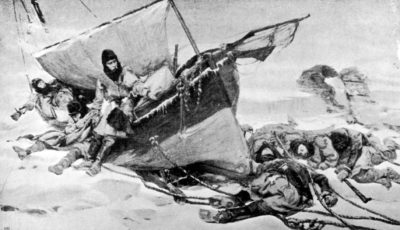 streptomycin, to be already resistant to the antibiotic.
streptomycin, to be already resistant to the antibiotic.
Scientists at the University of Alberta, late in the twentieth century, extracted bacteria from members of the historic “Franklin Expedition.” These venturers had mysteriously perished in the Arctic in 1845.
More than 150 years later, on examining the intestines of these explorers, the revived bacteria, surprisingly, demonstrated the same level of antimicrobial resistance as found in modern society. The 1990 Canadian Sunday Herald broke the story entitled “Ancient Bacteria Revived.” As reporter Ed Struzik explained –
“[not] only are the six strains of bacteria almost certainly the oldest ever revived … three of them also happen to be resistant to antibiotics. In this case, the antibiotics clindamycin and cefoxitin, both of which were developed more than a century after the men died, were among those used.”
Antimicrobial use did not drive the development of resistance. More recently, a team of investigators led by Vanessa D’Costa of McMaster University in the paper entitled “Antibiotic Resistance is Ancient” in 2011, noted –
“antibiotic resistance is a natural phenomenon that predates the modern selective pressure of clinical antibiotic use.”
Importantly, while the use of antimicrobial agents cannot induce cells to develop the genetic mechanisms for resistance, antimicrobial agents are likely to eliminate the microbes without a resistant gene. As a result, the microbes with a resistant gene will remain.
This process of elimination is known as selection. Importantly, natural selection is an elimination process, not an evolution process. As Charles Darwin argued in the Origin of Species –
“… extinction and natural selection … go hand in hand.”
Stasis Undermines Evolution
Warinner’s evidence points to stasis, not evolution. Not only are the genetics comparable between ancient and modern humans, but so are the microbes. In the words of ScienceDaily –
“The ancient human oral cavity carries the same bacteria today as in the past, despite major changes in human diet and hygiene.”
Ancient and modern humans shared more than 40 microorganisms, including Actinomyces odontolyticus, Streptococcus pneumoniae, Streptococcus pyogenes, Haemophilus influenza, Neisseria meningitidis, and Neisseria gonorrhoeae.
Darwin’s dilemma intensifies. For good reasons, Eugenie Scott, in the 2009 book “Evolution vs. Creationism,” did not use microbial resistance as a model of evolution.
Genesis 
The scientific evidence remains compatible with the Genesis account written by Moses. Louis Pasteur, a French chemist and microbiologist, discovered the principles of vaccination, microbial fermentation, and pasteurization, credited for disproving Darwin’s doctrine of spontaneous generation noted during the Scientific Revolution –
“I see everywhere the inevitable expression of the Infinite in the world; through it the supernatural is at the bottom of every heart.”
Refer to the Glossary for the definition of terms and to Understanding Evolution to gain insights into understanding evolution.

